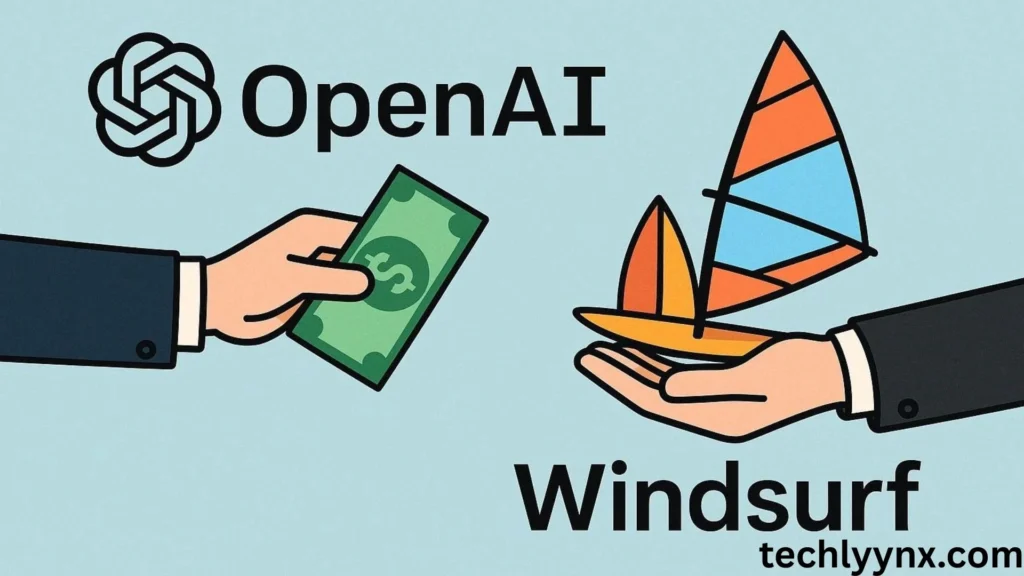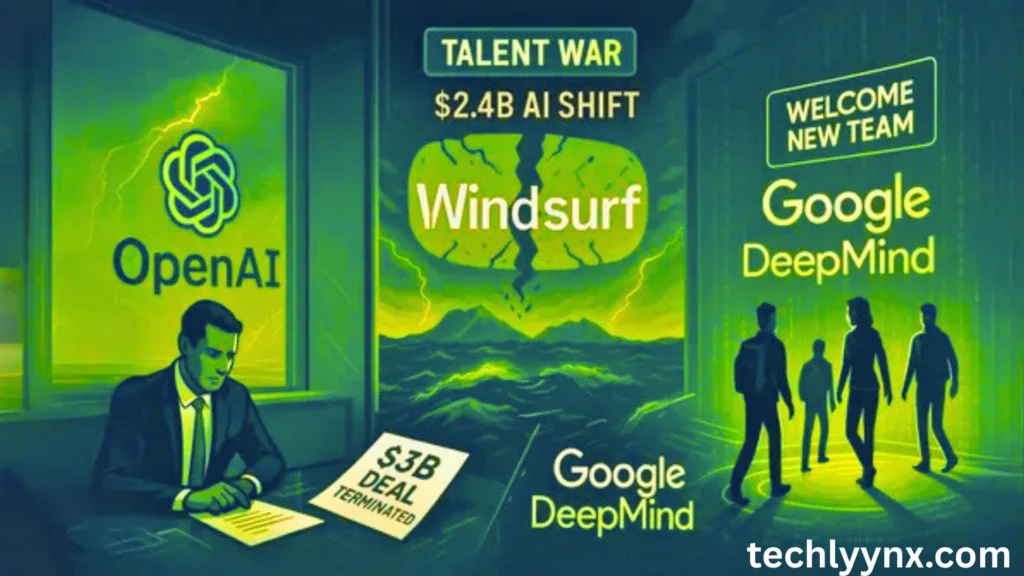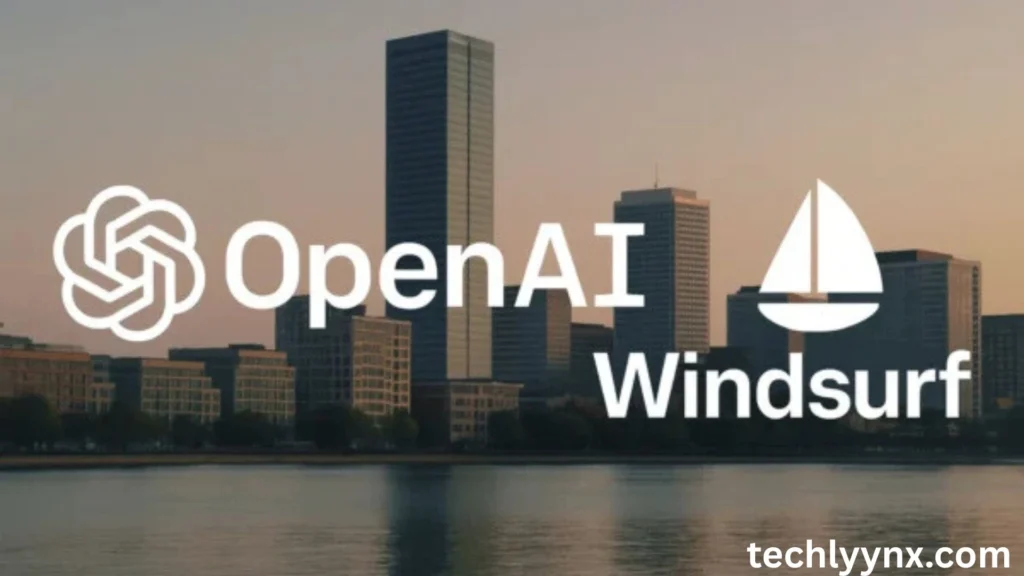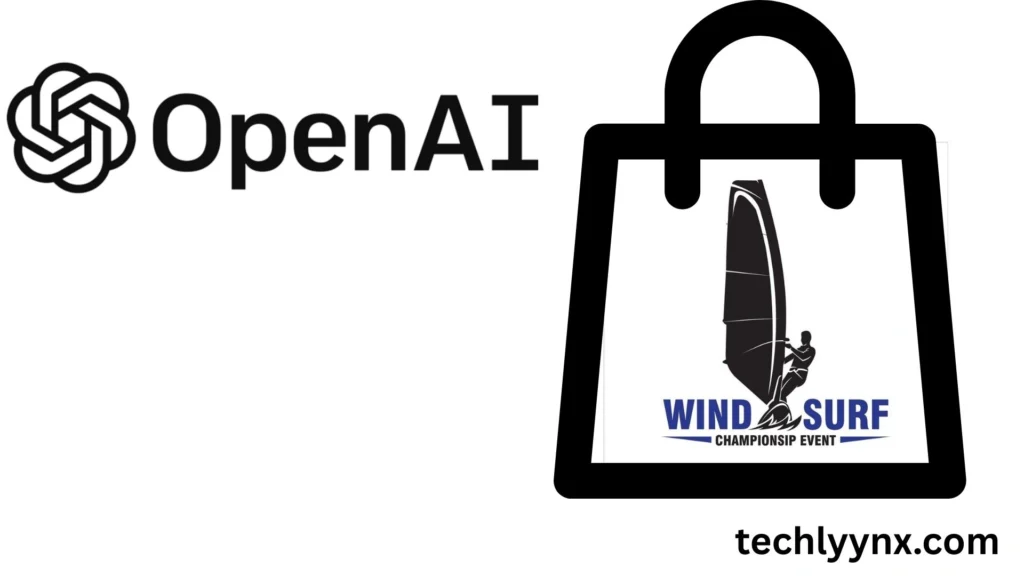The field of artificial intelligence (AI) is evolving at an incredible rate. Every few months, we see innovations that totally alter the way we think about technology. Along with innovations, billion-dollar commercial transactions—acquisitions, partnerships, and power plays—shape the competitive landscape.
One of the most talked-about incidents in recent memory has been the OpenAI Windsurf acquisition effort, which was reportedly valued at roughly $3 billion. Some applauded it as a brilliant move that may offer OpenAI unparalleled control over AI-powered coding tools, while others saw it as a dubious venture.
So, was the OpenAI Windsurf Acquisition really a smart move or a potential misstep? Let’s dive deeper into the story, the strategy, and the lessons behind it.
What Was the OpenAI Windsurf Acquisition All About?
To comprehend the buzz, we need to first define Windsurf. Windsurf is an AI-powered coding tool that helps developers by serving as a “agent” within their workflow. Unlike simple code-completion tools, Windsurf focuses on deep integration with the development environment, acting as a co-pilot anticipating the coder’s next steps.
The OpenAI Windsurf Acquisition sought to put this technology under the OpenAI umbrella. With a $3 billion price tag, it would have been one of OpenAI’s largest transactions ever. By acquiring Windsurf, OpenAI aimed to gain control over not only the language models used for coding assistance, but also the environment in which engineers built applications.
Why Did OpenAI Want Windsurf?

From the outside, the motivations for the acquisition appeared to be rather evident. OpenAI has steadily grown from a research facility to a commercial powerhouse. Products such as ChatGPT and integrations with Microsoft’s Copilot have already made AI available to millions of consumers. But acquiring Windsurf would have gone a step farther.
Here are some of the possible reasons why OpenAI evaluated the acquisition.
A complete developer experience
By acquiring Windsurf, OpenAI could provide a whole pipeline, from natural language code generation to real-time debugging and automation within an integrated development environment (IDE).
Competitive Pressure
Microsoft has GitHub Copilot, while Google is developing its own developer-oriented AI tools. The OpenAI Windsurf acquisition was a means to keep ahead of the competition and build a devoted developer base.
Data Advantage
By owning the IDE, OpenAI might obtain access to significant developer telemetry and usage data, which is critical for training future models.
Enterprise Expansion
Beyond individual developers, enterprise software teams are expected to pay for tightly integrated AI coding solutions, resulting in a new revenue stream.
The $3 Billion Price Tag

Now the main question: was $3 billion a good investment? Opinions have been split.
The Case of a Masterstroke
Strategic Integration: With Windsurf, OpenAI could have created a full-stack developer tool to challenge GitHub Copilot. Owning the environment provides companies control over how AI models are employed in code.
- Defensive Move: If Google or Microsoft had acquired Windsurf first, OpenAI could have missed out on a significant opportunity.
- Future-proofing: The software development market is enormous. Even a modest share could justify the $3 billion purchase over time.
The Case for a Misstep
- High valuation: Critics claim that Windsurf’s income and user base do not warrant a $3 billion price tag. The cost reflected potential rather than actual performance.
- Execution Risk: Integrating a startup into a firm as complicated as OpenAI is no easy task. Mergers can quickly lose momentum.
- Talent Drain: As the story progressed, Windsurf’s leadership left for Google DeepMind, demonstrating how vulnerable acquisitions can be when important personnel depart.
How the Acquisition Unraveled

Despite the hoopla, the OpenAI Windsurf Acquisition was never completely realized. According to reports, Windsurf’s CEO and key talent moved to Google once its exclusivity rights expired, and the business finally shifted elsewhere.
For OpenAI, this was a setback. Not only did they lose access to Windsurf’s technology, but Google also acquired the talent and some of the licensed technology.
Windsurf’s fallout was as turbulent. Following leadership changes and failed talks, the company was eventually acquired by Cognition, another AI startup, resulting in layoffs and workplace problems.
Lessons From the OpenAI Windsurf Acquisition Saga
The rise and failure of this purchase attempt teach several key lessons—not just for OpenAI, but for anybody watching the AI sector.
- The Talent War is Fierce. In the field of artificial intelligence, the most precious resource is not the technology itself, but the people who create it. Windsurf’s leadership transition to Google demonstrates how fragile acquisitions may be if talent loyalty is not guaranteed.
- Valuation Reflect hype as much as reality. The $3 billion figure piqued interest since it appeared detached from Windsurf’s actual revenues. Companies in fast-moving industries, such as artificial intelligence, frequently pay for potential, but the risks are considerable if that potential is not realized.
- Big Tech Competition Shapes Every Move. OpenAI’s interest in Windsurf was most likely prompted in part by concern that Google or Microsoft would acquire it first. This type of competitive chess game frequently raises prices over what appears sensible.
- Owning the pipeline is important. Control over the development environment is strategic. Whoever owns the place where developers write code has a powerful means of distributing AI tools. The OpenAI Windsurf Acquisition attempt demonstrates just how significant this battlefield has become.
Could It Still Be a Masterstroke in Disguise?
Even though the agreement fell through, OpenAI may still gain indirectly. The exposure alone revealed OpenAI’s ambitions in developer tooling, and it may encourage them to speed their own in-house IDE integrations. Sometimes failed deals serve as a stimulus for developing superior internal solutions.
Meanwhile, Google acquired the Windsurf team, but its integration into DeepMind will take time, and it is uncertain how much competitive advantage it actually delivers.
What This Means for the Future of AI and Developers
The Windsurf saga is simply one part of a wider story. The competition for AI tools among developers is heating up. Microsoft, Google, Anthropic, and others are all striving to be the most popular platform for AI coding.
For developers, this implies more options, more capable tools, and perhaps reduced costs as competition increases. For businesses, it means determining whether to rely on a single ecosystem or stay adaptable.
The OpenAI Windsurf acquisition, whether a squandered opportunity or a dodged bullet, demonstrates how important developer-focused AI is becoming to the future of software.

